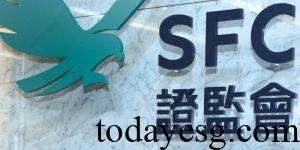
World Wildlife Fund Releases Voluntary Biodiversity Credit Position Paper
World Wildlife Fund (WWF) releases a position paper on voluntary biodiversity credits

World Wildlife Fund (WWF) releases a position paper on voluntary biodiversity credits

SSE releases a new version of the compilation plan for the SSE 180 Index, which includes ESG ratings in the selection method

ESMA releases 2024 EU carbon market, aimed at analyzing the development of pricing, trading, and derivatives

Hong Kong Securities and Futures Commission officially releases Code of Conduct for ESG Ratings and Data Products Providers

The Morgan Stanley Institute for Sustainable Investing releases 2024 H1 Global Sustainable Fund Report

Sustainalytics releases a report on global biodiversity funds, aimed at analyzing the development trends of these funds

The International Capital Market Association releases a report on sustainable commercial paper

Fidelity International has launched the world’s first Blue Transition Bond Fund
Since United Nations Global Compact put forward the concept of Environmental, Social and Governance, the financial industry has always been an important driver of the development of ESG, and various types of ESG products have emerged in an endless stream. These products serve as a bridge between investors and companies, helping funds to be efficiently allocated to long-term assets.
Common ESG financial products include ESG bonds (such as green bonds, blue bonds, transition bonds, sustainable bonds, sustainable linked bonds), ESG funds and ESG indexes. Although these financial products are still facing problems such as greenwashing, they have indeed contributed to the development. Regulators are also trying to reduce the negative impact of these products.
ESG focuses on the improvement of long-term value, and ESG products are attracting long-term funds. In the current situation, balancing risk and return is an important topic, and ESG products will become an important choice for investors to allocate assets.